New Methods Explored at Tenth IEEE International Symposium on Biomedical Imaging (ISBI’13)
By Bahram Parvin, Max Viergever, Michael Liebling and Lawrence Staib
Biomedical Imaging is constantly evolving to meet new challenges in biology and medicine. Conversely, new computational methods open the possibility to extend the capabilities and breadth of instrumentation, to improve the accuracy of detection and diagnosis, and to unveil new biological mechanisms. This multi-way interaction between the sciences, medicine and engineering is reflected throughout the broad range of events that were offered at ISBI.
The tenth IEEE International Symposium on Biomedical Imaging (ISBI’13) was held in San Francisco, California 7-11 April 2013. The conference brought together over 600 engineers, scientists and physicians, working on all aspects of biological and medical imaging. ISBI is a joint initiative of the IEEE Signal Processing Society (SPS) and the IEEE Engineering in Medicine and Biology Society (EMBS). The 2013 meeting continued the tradition of bringing together different imaging communities and contributing to integrate imaging approaches across all modalities and scales.
ISBI 2013 opened with Grand Challenges, contests that allowed comparing multiple algorithms side-by-side, on Sunday afternoon through Monday morning. Challenge topics included high angular resolution diffusion imaging reconstruction, deconvolution and localization techniques in optical microscopy, cell tracking, detection of pulmonary embolism, neurites in electron microscopy and segmentation of prostate structures. Contestants were provided with the task, a training dataset and, eventually, a data set on which contestants compete. Given their success we expect to see more challenges in editions to come.
Monday morning featured three tutorials that covered timely topics: deep learning, super resolution MRI, and statistical methods in medical imaging. The technical program of lectures and poster presentations started on Monday afternoon.
This year, some 688 4-page paper submissions were received and underwent peer-review. Based on the recommendations from the associate editors and the reviewer comments, the technical chairs selected 130 manuscripts for contributed oral sessions, 241 for poster sessions, and 6 for special sessions. These high-quality papers contain original contributions to the algorithmic, mathematical and computational aspects of biomedical imaging, as well as emerging methodology and instrumentation, from nano- to macroscale and will be archived in IEEE Xplore.
Five distinguished plenary speakers were invited and spoke during the week. John Sedat, professor emeritus from the University of California, San Francisco and member of the National Academy of Sciences who has long been at the forefront of optical imaging in biology, delivered the first plenary, on “Live Biology 4-Dimensional Imaging: Challenges and New Directions.” David Donoho, from Stanford University, presented the second plenary on “Compressed Sensing: Recent Advances and Novel Applications,” and reflected on this very active topic, which was represented in several sessions throughout the conference. Stephen Wong, from the Methodist Hospital Research Institute and the Weill Cornell Medical College, spoke on an exciting and promising new modality in his talk on “Quantitative and Label-Free Molecular Vibration Imaging for Translational Medicine.” Simon Cherry, from the University of California at Davis, spoke on the design and implementation of state-of-the-art Positron Emission Tomography (PET) scanners in his talk on “Nuclear Molecular Imaging: Breaking the Resolution and Sensitivity Barriers.” Finally, Joe Gray, from Oregon Health and Science University, presented the fifth plenary on “Systems Biology and Cancer Management,” providing an overview of the challenges and opportunities offered by integrating carefully designed experiments and collecting large amounts of spatial and molecular data to identify new biomarkers in diagnostic and therapy.
ISBI also hosted 6 special sessions with some 30 invited presenters who addressed topics including quantitative diffusion-weighted MRI biomarkers for clinical trials, integration of radiology, pathology, and molecular data, sparse representations and compressed sensing in medical ultrasound imaging, sparse methods for medical image analysis, computational methods for integrative analysis of imaging and genomic data, and image-based representation and modeling of spatio-temporal cell-dynamics.
For the second time, ISBI also hosted a short abstract poster track (not part of the archived program) to highlight biological and clinical applications as well as software tools.
The best student paper competition (sponsored by Kitware, Inc.) recognized the high quality of our student papers, and the winners, Emily Dennis (UCLA), Junhong Min (KAIST and EPFL) and Nikhil Singh (U. of Utah), were announced on Thursday before the plenary session.
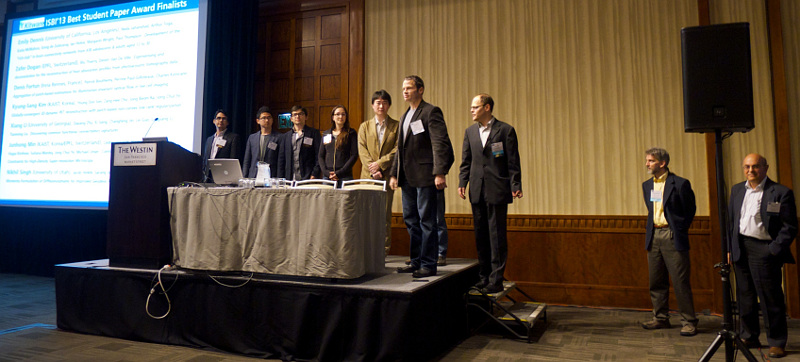
ISBI’13 Best Student Paper Award Ceremony. Dr. Stephen Aylward, Senior Director of Operations, Kitware Inc. (and ISBI’13 Challenges co-chair), hands out the Best Student Paper awards to Emily Dennis (UCLA), Junhong Min (KAIST and EPFL), and Nikhil Singh (U. Utah). Also on the podium: runner-up finalists Zafer Dogan (EPFL), Denis Fortun (Inria Rennes), Kyung-Sang Kim (KAIST), and Xiang Li (U. Georgia); On the right: Michael Liebling, Larry Staib (Technical Program Chairs) and Bahram Parvin (General Chair). (Photo credit: Brad Davis).
Financial support from the National Science Foundation is gratefully acknowledged. Thirty six students received NSF Scholar Awards that supported either tutorial attendance or partial travel support. The ISBI organizing committee believes that continuous dissemination of advanced computational methodologies, through tutorials, will significantly improve publication quality in the years to come.
We are looking forward to the next edition of ISBI, which will be held in Beijing, China 28 April-2 May 2014.
Contributors
Bahram Parvin is Staff Scientist in the Life Sciences Division of the Berkeley Lab of Lawrence Berkely National Laboratory and Adjunct Professor of Electrical Engineering at the University of California. He received his PhD in Electrical Engineering at the University of Southern California in 1991. His current research work focuses on Integrative Biology and development of novel imaging probes. Dr. Parvin is a Senior Member of the IEEE. Read more
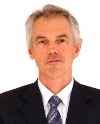 Max Viergever is Professor and Head of the Department of Medical Imaging at Utrecht University. He also holds appointments as Professor in Physics and Computer Science at Utrecht University. He received his DSc degree from Delft University of Technology. He is founder and director of the Image Sciences Institute, of the PhD programme Medical Imaging (ImagO), and of the MSc programme Biomedical Image Sciences (BIS). His research interests comprise all aspects of medical imaging. Dr. Viergever is an IEEE Fellow. Read more
Max Viergever is Professor and Head of the Department of Medical Imaging at Utrecht University. He also holds appointments as Professor in Physics and Computer Science at Utrecht University. He received his DSc degree from Delft University of Technology. He is founder and director of the Image Sciences Institute, of the PhD programme Medical Imaging (ImagO), and of the MSc programme Biomedical Image Sciences (BIS). His research interests comprise all aspects of medical imaging. Dr. Viergever is an IEEE Fellow. Read more
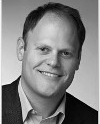 Michael Liebling is an assistant professor in the Department of Electrical and Computer Engineering at the University of California, Santa Barbara. He received his PhD from the Ecole Polytechnique Federale de Lausanne (EPFL), Switzerland. His research interests include biological microscopy and image processing for the study of dynamic biological processes. Read more
Michael Liebling is an assistant professor in the Department of Electrical and Computer Engineering at the University of California, Santa Barbara. He received his PhD from the Ecole Polytechnique Federale de Lausanne (EPFL), Switzerland. His research interests include biological microscopy and image processing for the study of dynamic biological processes. Read more
 Lawrence Staib received his Ph.D. degree in Engineering and Applied Science from Yale University, New Haven, CT. He is now Associate Professor of Biomedical Engineering, Diagnostic Radiology and Electrical Engineering at Yale University. Dr. Staib’s primary research interests are in the development of methods for medical image analysis and quantification with applications in neuroscience, radiology and cardiology. Read more
Lawrence Staib received his Ph.D. degree in Engineering and Applied Science from Yale University, New Haven, CT. He is now Associate Professor of Biomedical Engineering, Diagnostic Radiology and Electrical Engineering at Yale University. Dr. Staib’s primary research interests are in the development of methods for medical image analysis and quantification with applications in neuroscience, radiology and cardiology. Read more







 Nitish V. Thakor is is a Professor of Biomedical Engineering at Johns Hopkins University, Baltimore, USA, as well as the Director of the newly formed institute for neurotechnology, SiNAPSE, at the National University of Singapore.
Nitish V. Thakor is is a Professor of Biomedical Engineering at Johns Hopkins University, Baltimore, USA, as well as the Director of the newly formed institute for neurotechnology, SiNAPSE, at the National University of Singapore.  Max Viergever is Professor and Head of the Department of Medical Imaging at Utrecht University. He also holds appointments as Professor in Physics and Computer Science at Utrecht University.
Max Viergever is Professor and Head of the Department of Medical Imaging at Utrecht University. He also holds appointments as Professor in Physics and Computer Science at Utrecht University.  Michael Liebling is an assistant professor in the Department of Electrical and Computer Engineering at the University of California, Santa Barbara. He received his PhD from the Ecole Polytechnique Federale de Lausanne (EPFL), Switzerland.
Michael Liebling is an assistant professor in the Department of Electrical and Computer Engineering at the University of California, Santa Barbara. He received his PhD from the Ecole Polytechnique Federale de Lausanne (EPFL), Switzerland. 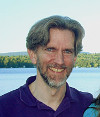 Lawrence Staib received his Ph.D. degree in Engineering and Applied Science from Yale University, New Haven, CT. He is now Associate Professor of Biomedical Engineering, Diagnostic Radiology and Electrical Engineering at Yale University.
Lawrence Staib received his Ph.D. degree in Engineering and Applied Science from Yale University, New Haven, CT. He is now Associate Professor of Biomedical Engineering, Diagnostic Radiology and Electrical Engineering at Yale University. 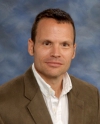 Stephen R. Aylward is the founder of and Senior Director of Operations at Kitware's North Carolina office, and an adjunct professor in computer science at UNC. Stephen received a Ph.D. in medical image analysis from UNC.
Stephen R. Aylward is the founder of and Senior Director of Operations at Kitware's North Carolina office, and an adjunct professor in computer science at UNC. Stephen received a Ph.D. in medical image analysis from UNC. 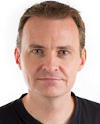 Bram van Ginneken is Professor of Functional Image Analysis at Radboud University Nijmegen Medical Centre. He is co-chair of the Diagnostic Image Analysis Group within the Department of Radiology, together with Nico Karssemeijer.
Bram van Ginneken is Professor of Functional Image Analysis at Radboud University Nijmegen Medical Centre. He is co-chair of the Diagnostic Image Analysis Group within the Department of Radiology, together with Nico Karssemeijer. 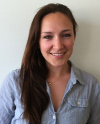 Emily L. Dennis has a B.A. degree in Psychology from Whitman College ('08) and is currently pursuing her Ph.D. in Neuroscience at UCLA with Dr. Paul Thompson. There she researches brain structural and functional connectivity - specifically, how they change over development, are influenced by genetics, and how they are related to cognitive function.
Emily L. Dennis has a B.A. degree in Psychology from Whitman College ('08) and is currently pursuing her Ph.D. in Neuroscience at UCLA with Dr. Paul Thompson. There she researches brain structural and functional connectivity - specifically, how they change over development, are influenced by genetics, and how they are related to cognitive function. 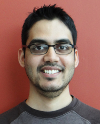 Nikhil Singh is pursuing his PhD in computer science at the University of Utah. He works at the Scientific Computing and Imaging Institute (SCI) with Dr. Tom Fletcher and Dr. Sarang Joshi as a research assistant.
Nikhil Singh is pursuing his PhD in computer science at the University of Utah. He works at the Scientific Computing and Imaging Institute (SCI) with Dr. Tom Fletcher and Dr. Sarang Joshi as a research assistant.